Šodien līča rajonā bija skaista diena, tāpēc es devos uz Napu un Popes ieleju. Es meklēju jaunu teritoriju mazai puķu kodei, Heliolonche Celeris, kas acīmredzot gaida, kad parādīsies patīkami laikapstākļi. Šī sezona ir bijusi nedaudz novēlota aukstuma un lietus dēļ, bet es ceru uz veiksmīgu atbildes vizīti pēc dažām nedēļām. Tomēr, Es tiešām sastapu sauju skaistu mikrolepšu. Visi šie kodes pieder pie ģints ADELE un ģimene Adelidae (vai daži teiktu esncurvariidae). Tie ir plaši pazīstami kā “pasaku kodes” jo šķiet, ka viņi dejo pāri ziedu plankumiem – ko acīmredzot fejām patīk darīt. Izskatījās, ka tēviņi aizstāvēja nelielu teritoriju, ar diviem līdz trim vienlaikus, griežas viens ap otru pāris collas virs ziediem. Es pieņemu, ka šīs dejas bija teritoriālas, jo netika novērota pārošanās. Kamēr mātītēm ir garas antenas, tēviņi to pārņem. Es savācu jauku sēriju, bet es vēl nav noteikuši sugu – cik daudz jūs redzat? Par laimi, visi no Adelidae tika ietverti a 1969 Džerija Pauela papīrs, kas arī dzīvo uz ielas no manis.
Pēc kolekciju apskatīšanas šeit, CAS, un lasot monogrāfiju, izskatās, ka lielākā daļa tādu ir Adela trigrāfa. Tā ir izplatīta Adelida Sanfrancisko līča apgabalā un lielākajā daļā CA piekrastes diapazonu. Tiek atzīmēts, ka atšķirības ir ievērojamas, ar lauztām un nepārtrauktām joslām, kā arī sarkanās krāsas variācijām uz vainaga. Otru Adelid ir viegli identificēt Adela mani uzliesmo.
Adela trigrāfa Zellers 1875
(vairāk attēlu pēc pārtraukuma)
Adela trigrāfa Zellers 1875
Adela mani uzliesmo Palātas 1876
Adela trigrāfa Zellers 1875
Adela trigrāfa Zellers 1875
Adela trigrāfa Zellers 1875
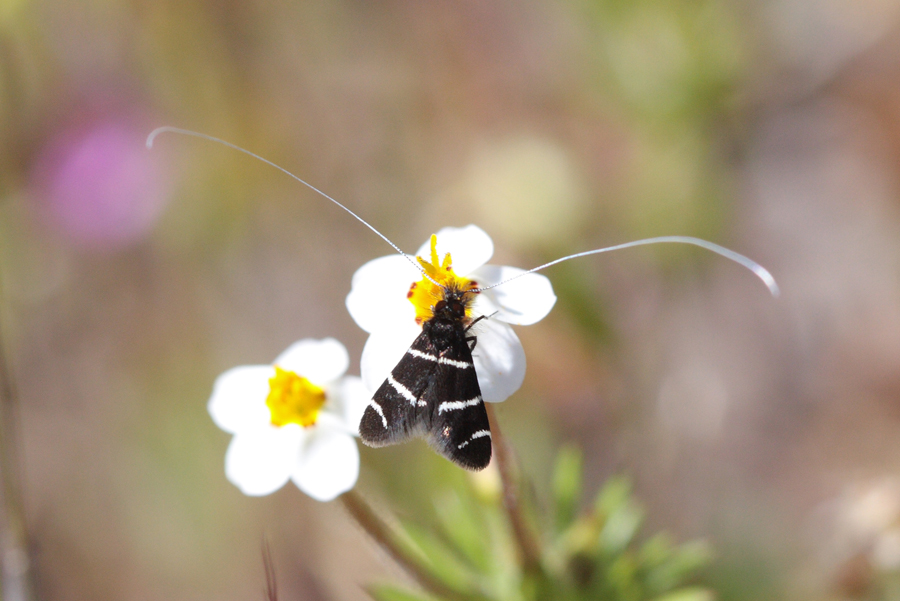
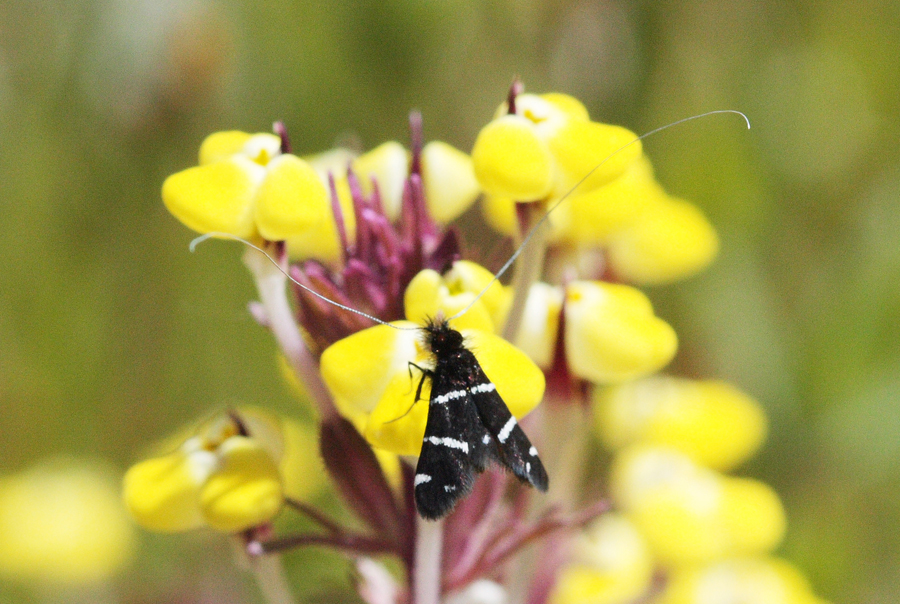
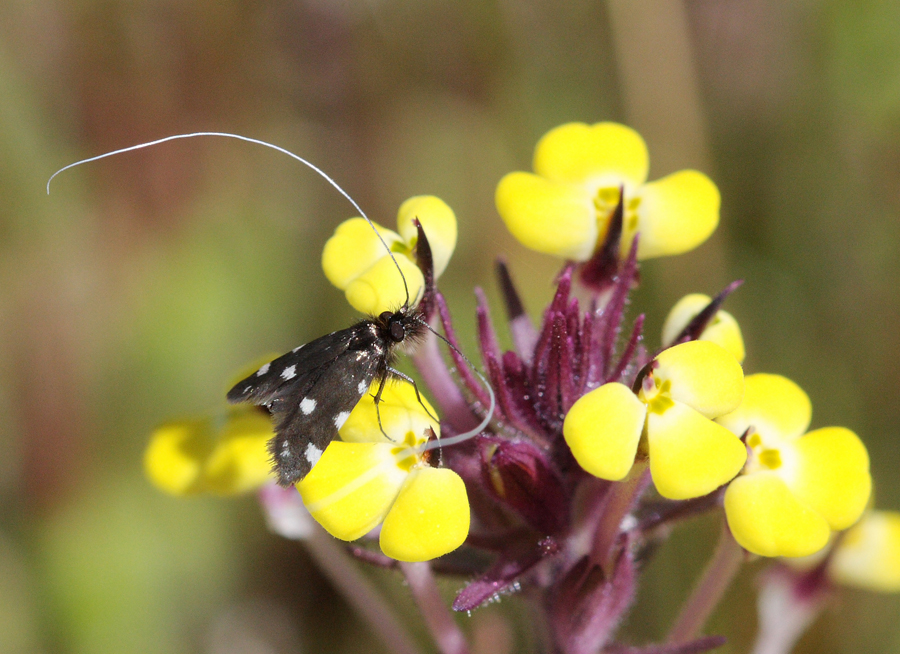
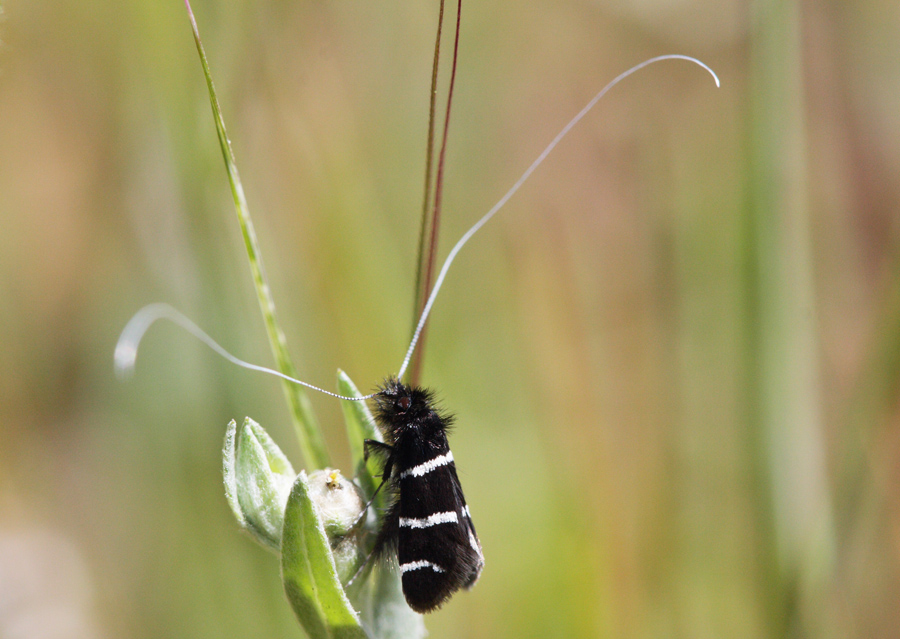
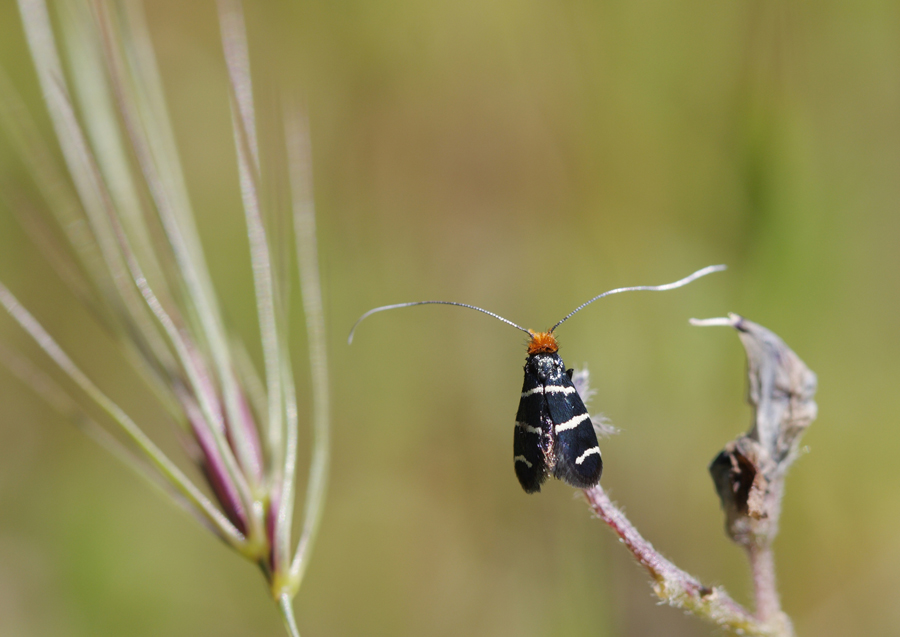
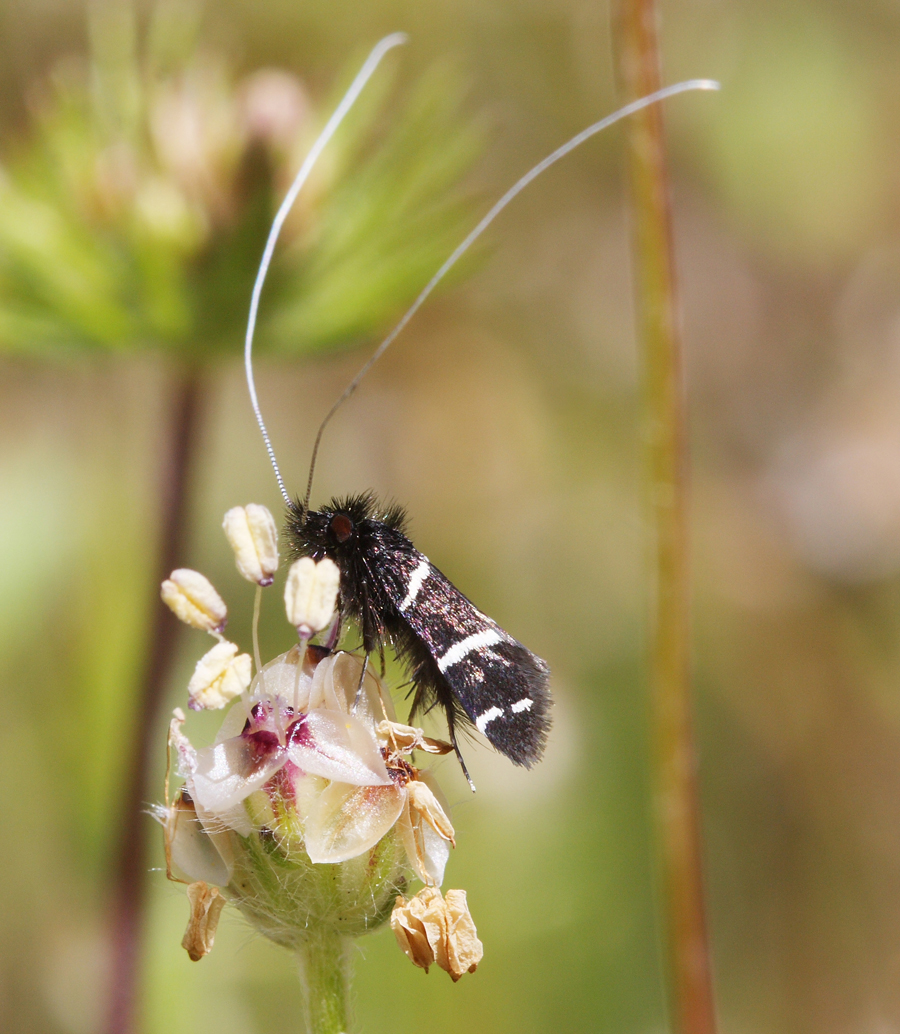

Must be at least three species – what about the one with the orange head? The markings are like those in photos 1 un 4, but the antennae don’t look as long and I’m wondering if this is sexual dichroism.
I hung out with a moth guy in my early days, who introduced me to “Incurvariidae.” They’re quite small as I recall – must be quite a challenge to mount.
Chris
Very unusual moth. To me it looks like a stag horn moth. How big is the wing span?
Yes I’m thinking 3 as well. I thought dimorphism at first too, but reading Powell it sounds like there are 2 species that are both supposed to have orange on the head to varying degrees. Not to mention, they shouldn’t overlap in range. It’s the ones without the orange that are more puzzling! I’ll just have to go over to Berkeley and have Jerry put names on them.
I kind of cheat by mounting my micros upside down – and I’m trying to illustrate exactly how I do it so I can add it to the techniques section.
And as far as micros go these guys are big! About 12mm wing tip to wing tip.
I love these little moths!…used to see them often while hiking along the coastal trails at Pt Reyes, on Calochortus tolmei.
Not which species though, perhaps you can put a name to it?
http://bobabela.com/California-Nature/Insects-Spiders/7263324_oXTZd#466874794_R7RiX
Updated, looks like they are all the same. Bob – your moth would also be A. trigrapha.
Ah, so two species rather than three – the post apical band can be complete or broken, but what about the orange head?
Paldies Chris.
It’s still confusing. Males have the orange, which varies considerably. There is still a chance some of these are Adela eldorata, which more commonly has a bright orange crown. I’ll still have Powell sort these specimens out and tell me the verdict.
All the monograph says in regards to the red on A. trigrapha is “… and a few to several orange scales at the back of the crown.” No note on dimorphism.
[…] Grinter, at The Skeptical Moth, goes moth tasting in the Napa Valley and photographically samples some intoxicating vintages of Adelidae fairy […]
[…] Adela trigrāfa (Moth Tasting in Napa) […]
[…] since I saw Chris Grinter’s beautiful photographs, I have wanted to see (and possibly photograph) the tiny little moths known as fairy moths (ģimene […]